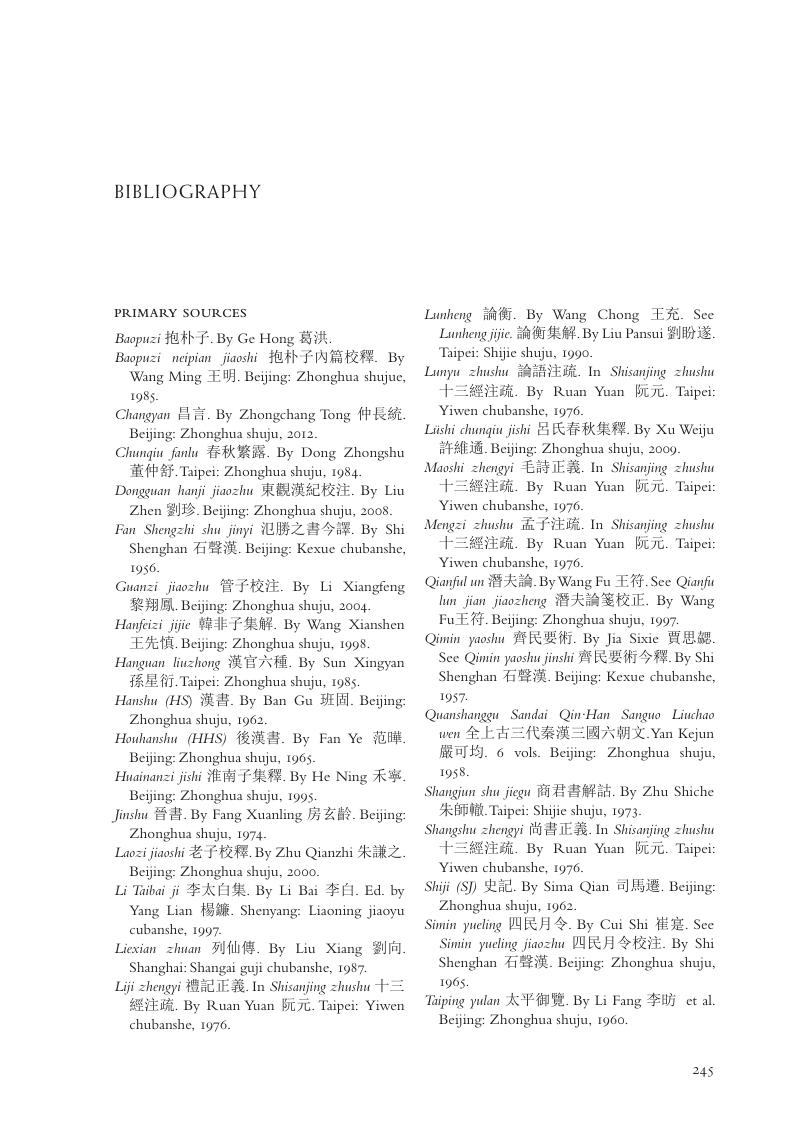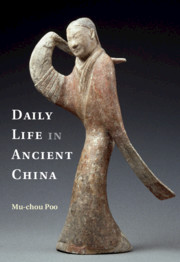Book contents
- Daily Life in Ancient China
- Daily Life in Ancient China
- Copyright page
- Contents
- Figures and Maps
- Preface
- Weights and Measures
- Journals and Abbreviations
- Introduction
- One The Stage
- Two Government Organization and Elite Ideology
- Three Social Structure and Law
- Four Country Life
- Five Cities and Urban Life
- Six Production, Consumption, and Ideological Constraints
- Seven Practical Technology
- Eight Leisure and Entertainment, Games, and Festivals
- Nine Glimpses of Emotional Life
- Ten Death, Burial, and the Hope for a Happy Afterlife
- Conclusion: Continuation and Transformation of Life Experience
- Bibliography
- Index
- References
Bibliography
Published online by Cambridge University Press: 11 June 2018
- Daily Life in Ancient China
- Daily Life in Ancient China
- Copyright page
- Contents
- Figures and Maps
- Preface
- Weights and Measures
- Journals and Abbreviations
- Introduction
- One The Stage
- Two Government Organization and Elite Ideology
- Three Social Structure and Law
- Four Country Life
- Five Cities and Urban Life
- Six Production, Consumption, and Ideological Constraints
- Seven Practical Technology
- Eight Leisure and Entertainment, Games, and Festivals
- Nine Glimpses of Emotional Life
- Ten Death, Burial, and the Hope for a Happy Afterlife
- Conclusion: Continuation and Transformation of Life Experience
- Bibliography
- Index
- References
Summary

- Type
- Chapter
- Information
- Daily Life in Ancient China , pp. 245 - 254Publisher: Cambridge University PressPrint publication year: 2018



